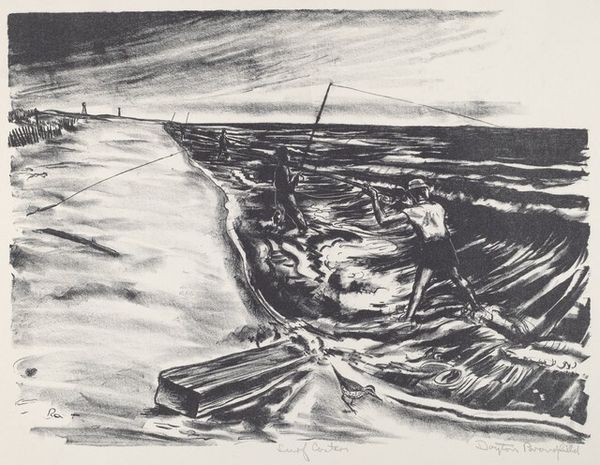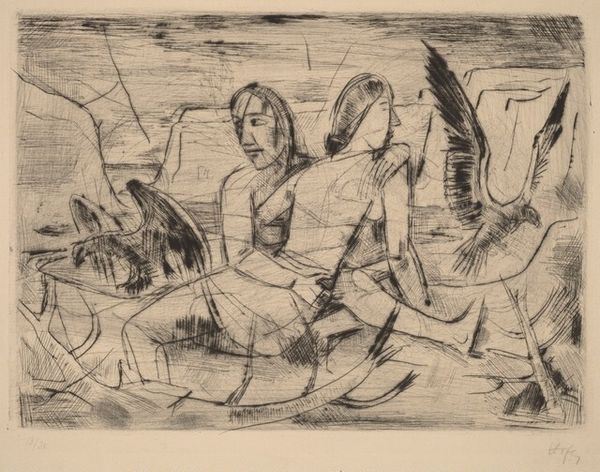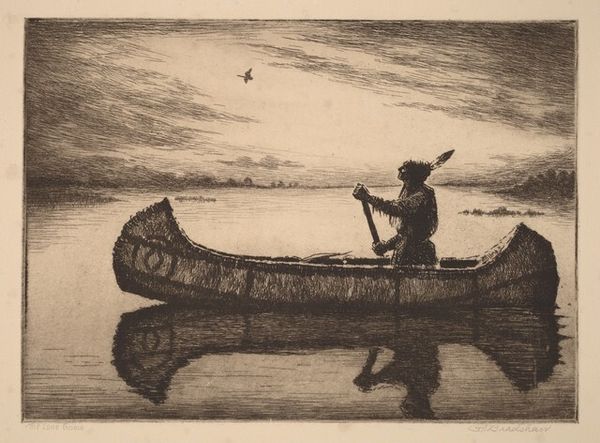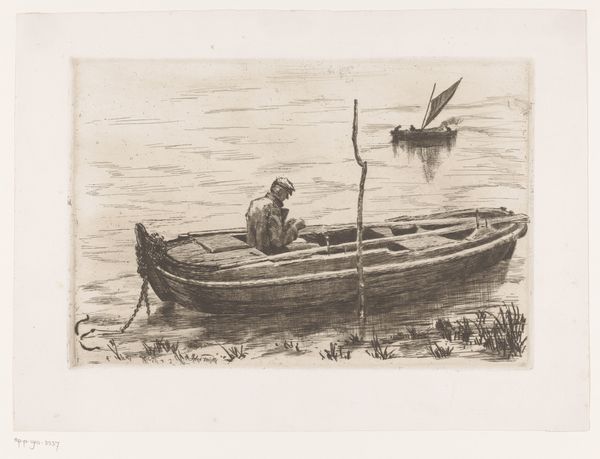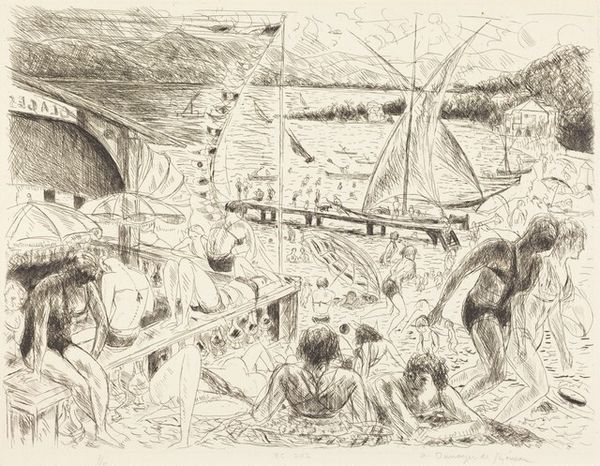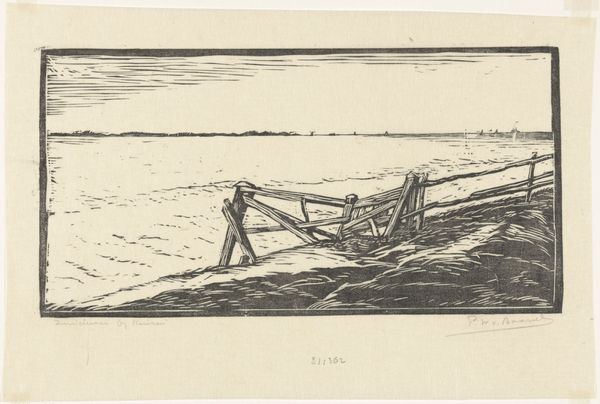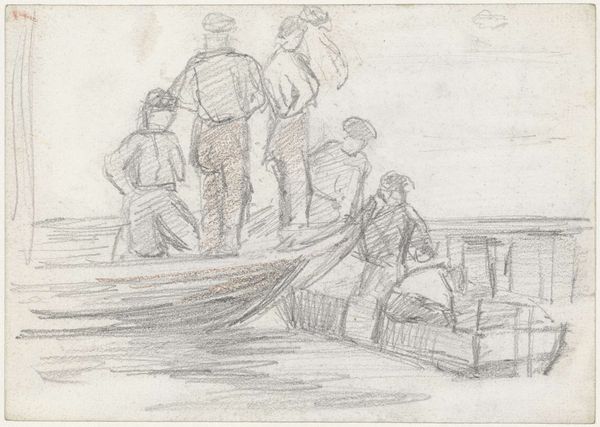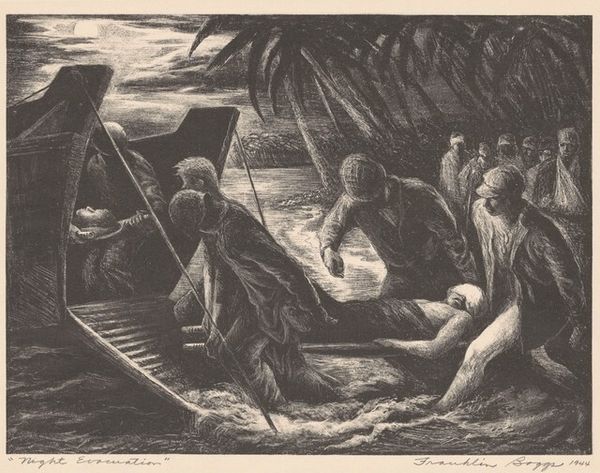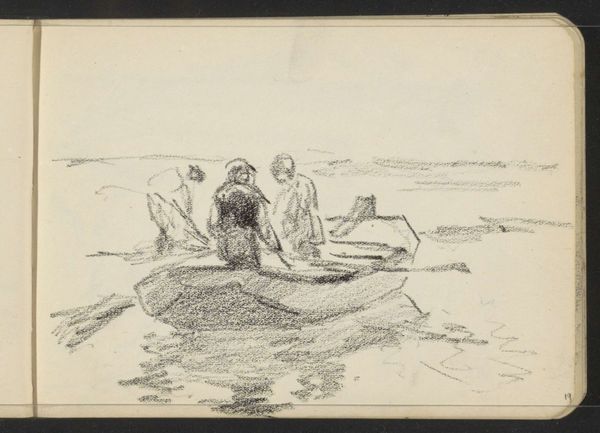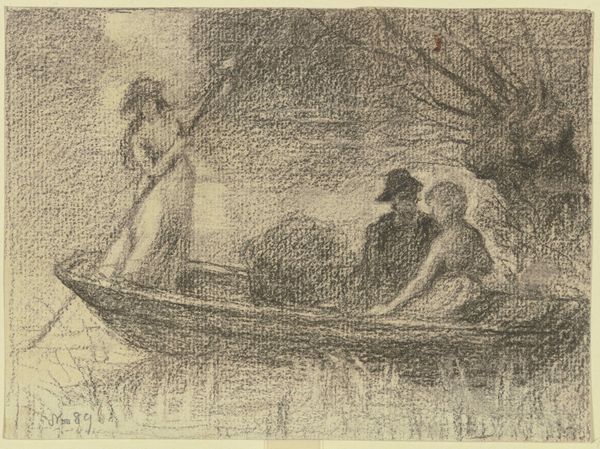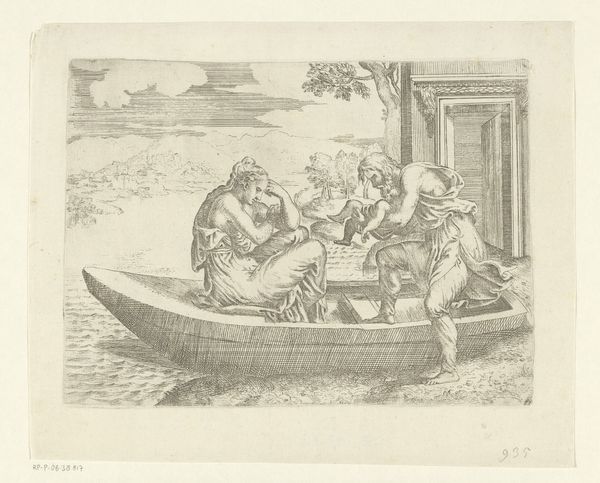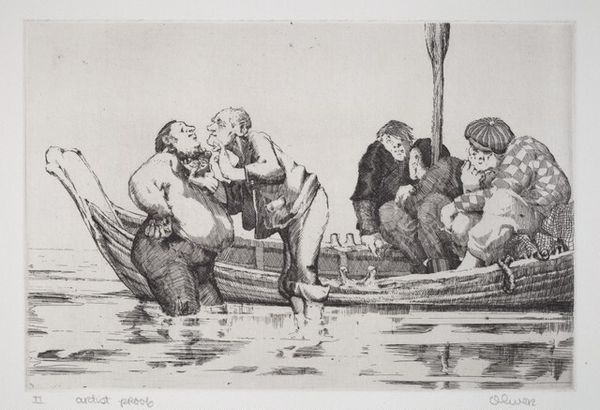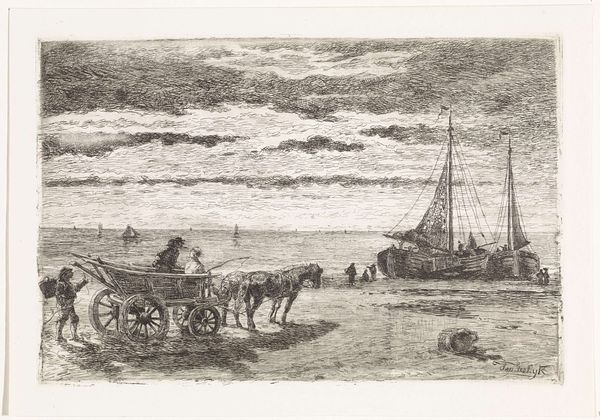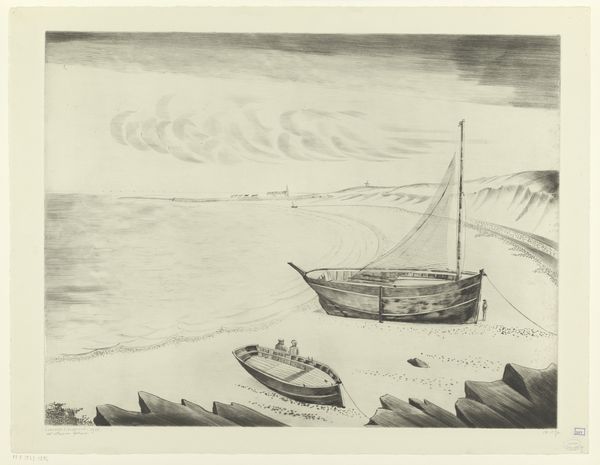
drawing, print, pencil
#
pencil drawn
#
drawing
#
narrative-art
# print
#
pencil sketch
#
landscape
#
figuration
#
pencil drawing
#
pencil
Dimensions: stone: --- x 414 mm image: 232 x 325 mm sheet: 287 x 442 mm
Copyright: National Gallery of Art: CC0 1.0
Editor: We are looking at Anne Kutka McCosh’s print, "The Rescue," created sometime between 1935 and 1939. It depicts a family in a small boat during a storm, rendered in pencil. There's a real sense of urgency and desperation. What do you see in this piece? Curator: I see a narrative steeped in resilience, survival, and possibly the socio-political anxieties of the late 1930s. Consider the context: the Great Depression, the looming threat of war. This family braving the storm could be a potent metaphor for the challenges faced by many. Notice the stark contrast between the figures huddled in the boat and the beckoning figure onshore; it invites questions of who is being rescued and from what? Editor: That's interesting. I hadn't considered the broader historical context. Do you think the artist is making a specific statement? Curator: Perhaps not a singular statement, but rather inviting us to contemplate the anxieties of a society on the brink. The precariousness of their situation, visualized through the storm and fragile boat, could reflect economic hardships, displacement, or even the growing threat of fascism. What is the gender dynamic that may reflect some form of inequality? Editor: That makes me see it differently. It's not just a dramatic scene, but a reflection of societal fears and struggles. Curator: Exactly! By viewing the artwork as more than just an image, we uncover rich narratives concerning socio-political conditions, resilience, and the complexities of human survival. It compels us to delve into history to really grasp it. Editor: Thank you. I see it's not enough to look only at what's in front of us; we also need to consider the context and deeper implications. Curator: Precisely, every element contributes to the meaning. Consider the medium: a print, implying mass production and dissemination—was this a message intended for a broad audience? Food for thought.
Comments
No comments
Be the first to comment and join the conversation on the ultimate creative platform.
